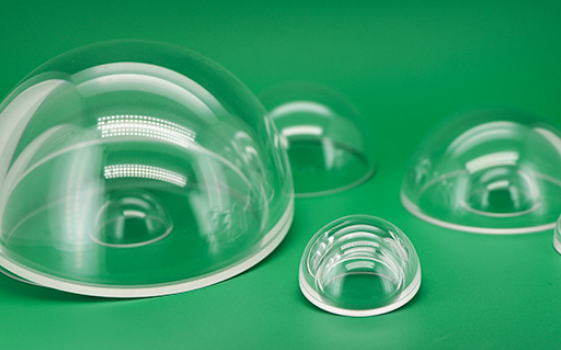Conquering Deep Pressures: Sapphire Domes for Exploration
Oct. 16, 2024
The Earth's oceans harbor a vast and mysterious realm, with over 95% still unexplored. Picture plunging into the inky blackness, where sunlight barely penetrates and immense pressure reigns. Scientists encounter incredible challenges when venturing into these depths, hampered by their limited ability to see and navigate this alien environment.
However, significant advancements in technology are expanding the frontiers of exploration. A key component in conquering the deep sea is the development of high-performance optical components, particularly sapphire domes. These domes serve as the eyes of submersibles and research equipment, providing scientists with a clear view of the hidden wonders beneath the surface.
CLZ Optical Co., Ltd. is a manufacturer of optical components, such as spherical lenses, optical domes, windows, and so on, we could provide optical domes use sapphire materials, and also can provide OEM, custom for customers according requirments.
In this blog, we will explore the fascinating world of sapphire domes, examining their unique properties, manufacturing processes, and the critical role they play in deep-sea exploration. We'll uncover the benefits of sapphire domes and illustrate how they empower scientists to unlock the secrets of the ocean's depths.
A Crushing Embrace of Pressure and Darkness
Imagine descending into a world of immense pressure, perpetual darkness, and near-freezing temperatures. This unforgiving environment characterizes the deep sea, presenting significant challenges for traditional exploration methods. Limited visibility and tethered remotely operated vehicles (ROVs) hinder our ability to navigate these depths effectively.
Enter manned and unmanned submersibles, specially designed vessels built to endure these harsh conditions and facilitate exploration. For these vehicles to operate successfully, they require a crucial component: a window capable of penetrating the darkness and withstanding the pressure—a role that sapphire domes fulfill perfectly.
The Challenge of Deep-Sea Observation Windows
Manned and unmanned submersibles depend on high-quality observation windows that allow scientists to gaze into the depths of the ocean. These windows face a formidable challenge: they must withstand the immense pressure of the deep sea while maintaining crystal clarity.
Traditional materials, such as acrylic, have significant limitations. At extreme depths, acrylic can crack or deform under crushing pressure, jeopardizing the integrity of the submersible and putting the mission at risk. Furthermore, acrylic is prone to scratching and clouding over time, which can further impair visibility.
Fortunately, advancements in materials science have provided a promising alternative: sapphire. This exceptionally strong and transparent material has the necessary properties to tackle the challenges of deep-sea observation effectively.
Sapphire Domes: Where Strength Meets Clarity
Sapphire is the premier choice for deep-sea observation windows, providing the exceptional strength and clarity necessary for underwater exploration.
Unmatched Strength: Sapphire’s strength far exceeds that of steel, enabling it to withstand the crushing pressures found at depths of up to 1,500 times greater than sea level. This resilience ensures the safety of both the submersible and its crew.
Superior Scratch Resistance: With a hardness second only to diamond, sapphire is highly resistant to scratches, making it ideal for the abrasive conditions of the deep sea. This durability is crucial for maintaining clear visibility over time.
Exceptional Light Transmission: Sapphire allows for outstanding light transmittance across a wide spectrum, facilitating clear visual observation and the effective use of specialized deep-sea research instruments.
Manufacturing Process
The creation of flawless sapphire domes involves meticulous techniques and stringent quality control measures.
Crystal Growth: The process begins with the growth of a flawless sapphire crystal, using methods such as Verneuil or Czochralski.
Fabrication and Polishing: The raw crystal is then carefully shaped and polished into a precise dome form, ensuring an optimal surface finish for both light transmission and pressure resistance.
Quality Control: Throughout the manufacturing process, rigorous quality control measures are implemented to guarantee that only domes meeting the highest standards are used in the challenging conditions of the deep sea.
Applications of Sapphire Domes in Deep-Sea Exploration
Manned and Unmanned Submersibles: These essential tools for deep-sea exploration rely on sapphire domes for pilot and scientist observation windows, as well as camera housings. Notable missions, such as James Cameron’s historic dive into the Mariana Trench with the DeepSea Challenger, utilized sapphire domes for their unparalleled clarity and pressure resistance.
Deep-Sea Research Equipment: Remotely Operated Vehicle (ROV) cameras and various oceanographic instruments frequently incorporate sapphire domes to capture high-resolution images and data in the challenging deep-sea environment. Their durability allows these instruments to operate at greater depths, gathering invaluable scientific information.
Deep-Sea Oil and Gas Exploration: The extreme conditions of the deep sea necessitate robust monitoring equipment. Custom sapphire domes are employed in cameras and pressure housings for pipeline inspections and equipment monitoring, ensuring safety and operational efficiency in these remote underwater fields.
Beyond these established applications, ongoing research and development are exploring new possibilities for sapphire domes in deep-sea exploration. Scientists are investigating their potential use in deep-sea mineral extraction equipment and underwater observatories, continually pushing the boundaries of what can be achieved in the ocean depths.






















